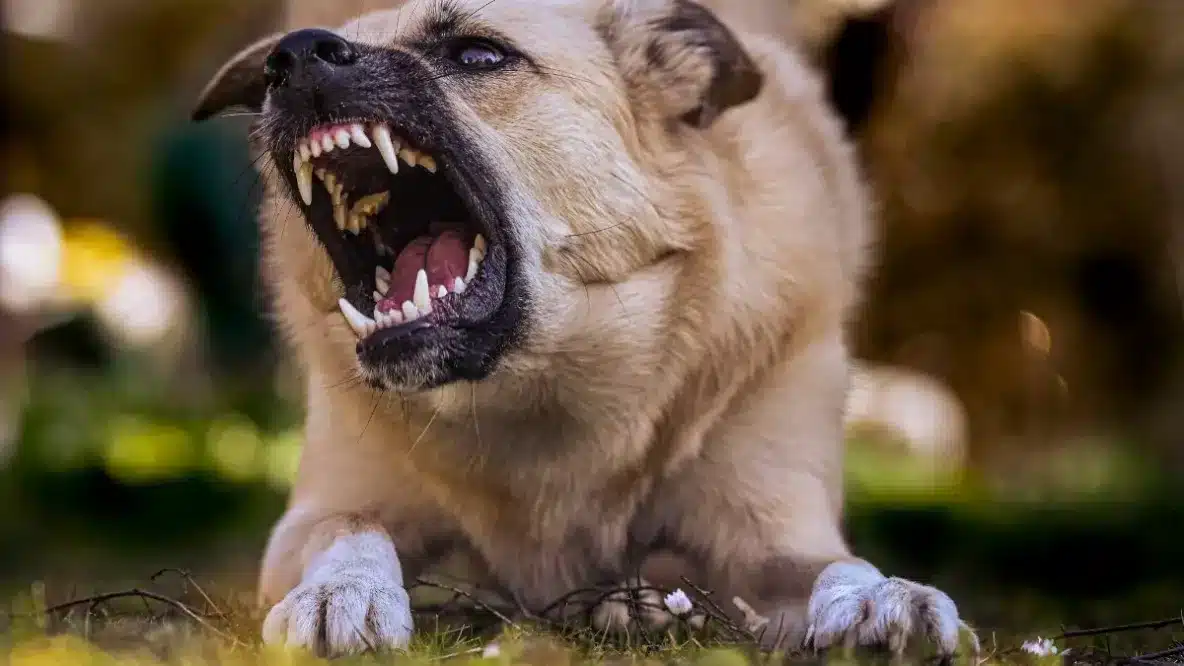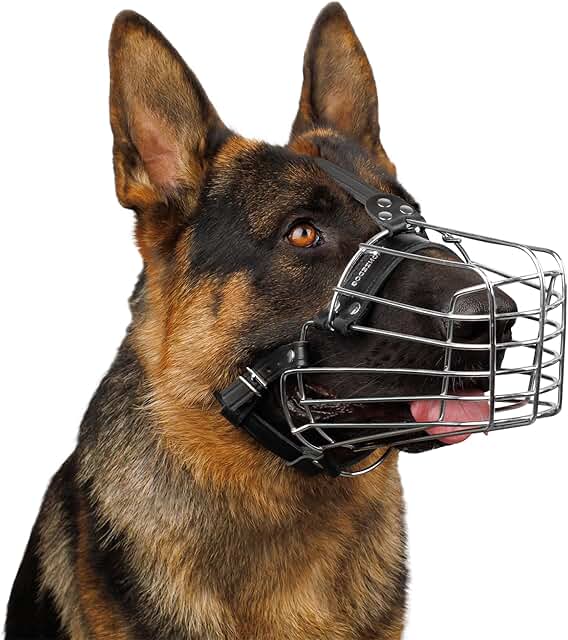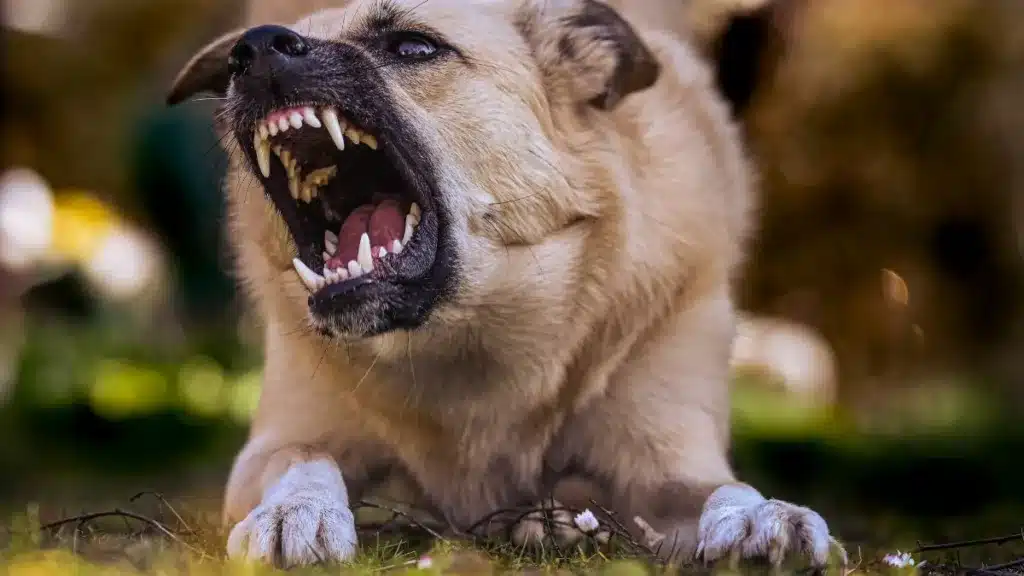
If you’re wondering whether your dog is aggressive or reactive, understanding the difference is crucial for managing the issue safely. Aggression involves behaviours intended to cause harm, while reactivity is an overreaction without harmful intent. By identifying the signs and underlying causes of these behaviours, you can take the necessary steps to address and manage your dog’s action safely. Below, we will help you distinguish between dog aggression vs dog reactivity.
Aggression in dogs is characterized by behaviors intended to cause harm or assert dominance. This can be directed towards humans, other animals, or objects. Aggressive behavior is typically a response to a perceived threat or challenge, whether real or imagined, and can manifest in various forms depending on the underlying cause.
What Is Dog Aggression?
Common Causes Of Dog Aggression
- Fear: Defensive aggression occurs when a dog feels threatened or cornered. This type of aggression is a protective mechanism to ward off the perceived danger.
- Territoriality: Dogs may become aggressive to protect their territory, which could include their home, yard, or even their owner’s possessions. Intruders, whether human or animal, can trigger this response.
- Dominance: Some dogs exhibit aggression to assert control or establish a hierarchy. This can happen between dogs or towards people, especially if the dog perceives a challenge to their authority.
- Pain: A dog in pain may react aggressively to avoid further discomfort. This can occur during grooming, handling, or if someone touches a sensitive area.
Signs of Dog Aggression
- Growling: A low, rumbling vocalization that serves as a warning. It indicates discomfort or a threat response.
- Snapping: Quick, sharp movements of the mouth, often without making contact. This is usually a warning that the dog is ready to bite if the threat continues.
- Biting: Actual physical contact where the dog uses its teeth to inflict harm. Bites can vary in severity from light nips to serious injuries.
- Stiff body posture: The dog’s body becomes rigid and tense. This is often accompanied by a lowered head, raised hackles, and a stiff-legged stance.
- Direct staring: A hard, unwavering gaze directed at the perceived threat. This is often a precursor to aggressive action and can be seen as a challenge or threat display.
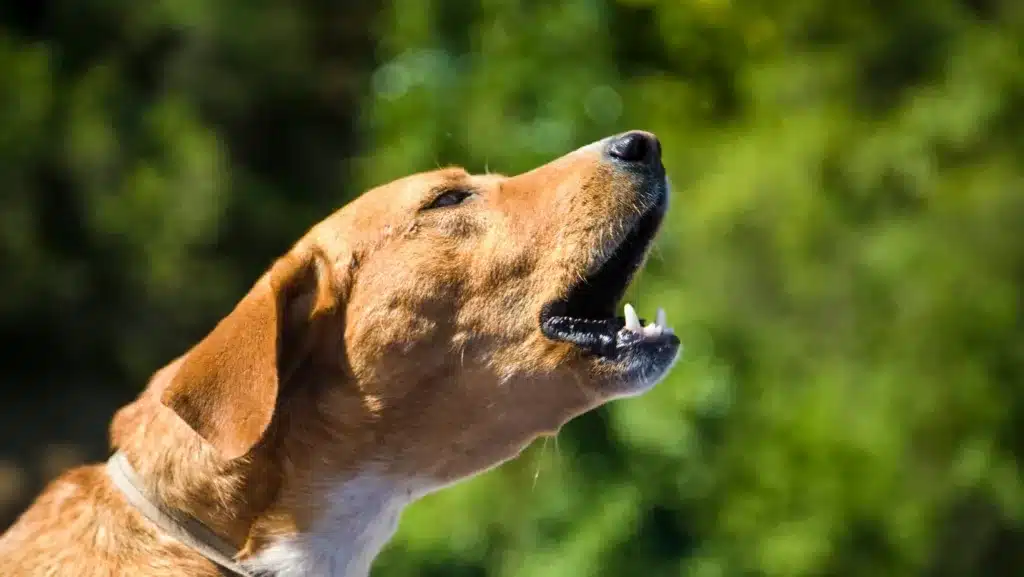
What Is Dog Reactivity?
Reactivity refers to an overreaction to certain stimuli, such as other dogs, people, or noises. Reactive dogs may not intend to harm but react intensely due to excitement, fear, or frustration. This heightened response can make everyday situations challenging and stressful for both the dog and the owner.
Common Cause of Dog Reactivity
- Fear: Reactivity often stems from fear, where dogs react to scary or unfamiliar situations. This response is a defense mechanism to create distance between themselves and the perceived threat.
- Overstimulation: In environments with high levels of activity or noise, dogs can become overstimulated. The excessive energy and excitement can lead to overreactions to various stimuli.
- Lack of Socialization: Dogs that haven’t been adequately exposed to different people, animals, and environments during their developmental stages may become reactive. This lack of socialization results in unfamiliarity and discomfort when encountering new experiences.
Signs of Dog Reactivity
- Barking: Persistent and often loud vocalizations in response to triggers. Barking serves as an alert or a way to express excitement or frustration.
- Lunging: Sudden forward movements towards the stimulus. Lunging can be an attempt to reach or move away from the trigger.
- Whining: High-pitched vocalizations that indicate anxiety or excitement. Whining is often a sign of stress and the inability to cope with the situation.
- Excessive excitement: Hyperactive behavior, including jumping, spinning, or frantic movements. This excitement is often a result of overstimulation and lack of control.
- Pacing: Repeatedly walking back and forth or in circles. Pacing is a common sign of anxiety and an attempt to self-soothe in stressful situations.
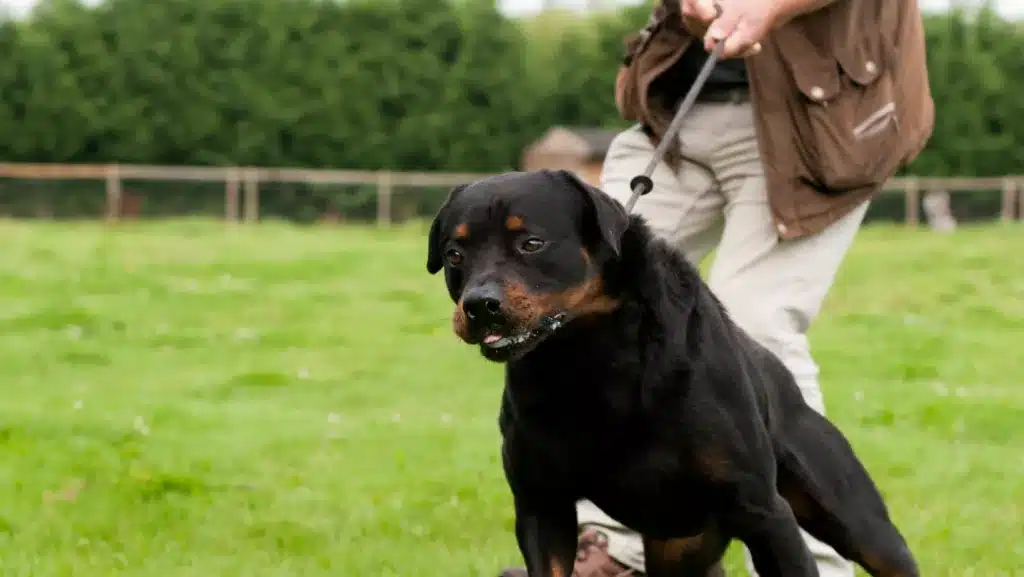
Key Differences Between Dog Aggression and Dog Reactivity
The Difference Is The Intent
Aggression: Often involves an intent to cause harm or assert control. Aggressive behavior is purposeful and directed towards achieving a specific outcome, such as deterring a threat or establishing dominance
Reactivity: Typically a response to a specific trigger without harmful intent. Reactive behavior is more about an immediate, intense reaction to a stimulus rather than a calculated action to cause harm.
Body Language
Aggressive Dogs: Display a stiff posture, direct staring, and showing teeth. These signs indicate a readiness to engage in a confrontational manner and are often accompanied by growling or snarling.
Reactive Dogs: Exhibit a wagging tail, high energy, and jumping or barking. These behaviors reflect excitement or frustration rather than an intent to harm. Reactive dogs might appear more animated and less controlled in their movements.
Situational Context
Aggression: May occur in various contexts, including territorial defense, dominance disputes, or resource guarding. Aggressive behavior can be triggered by a range of situations where the dog feels the need to assert control or protect itself or its territory.
Reactivity: Usually triggered by specific stimuli, such as other dogs, loud noises, or unfamiliar people. Reactive behavior is often context-specific and linked to particular triggers that cause an immediate and intense reaction.
Assessing Your Dog’s Behavior
Observation Tips
Watch your dog’s behavior in different situations, noting any aggressive or reactive responses. Pay attention to how your dog reacts to various stimuli, such as other animals, people, and environmental changes. Take note of body language, vocalizations, and actions in different contexts to identify patterns and triggers.
Trigger Identification
Keep a journal to track when and where your dog shows aggressive or reactive behavior. Note specific triggers, such as the presence of other dogs, loud noises, or unfamiliar people. Documenting these instances can help you understand the circumstances that lead to your dog’s reactions and identify any commonalities or patterns.
Professional Assessment
If you are unsure about your dog’s behavior or need additional insight, seek help from a professional trainer or behaviorist. These experts can provide an accurate assessment of your dog’s behavior, offer tailored advice, and develop a comprehensive management plan. Professional assessments are particularly valuable for complex cases or when dealing with severe aggression or reactivity.
Basket muzzles are the ideal choice for dog owners who want to ensure their pets’ safety and comfort. Unlike other types of muzzles, basket muzzles allow dogs to drink, pant, and breathe freely, which is crucial for their well-being, especially during physical activities or hot weather. Additionally, they provide excellent bite protection, making them a reliable option for managing aggressive or reactive behavior. By choosing a basket muzzle, you can effectively safeguard your dog and others while still allowing your furry friend to stay comfortable and hydrated.
Managing Aggression and Reactivity
Aggression Management
Desensitization: Gradually exposing your dog to triggers in a controlled and systematic manner helps them become less sensitive over time. Start with low-intensity exposure and gradually increase it as your dog becomes more comfortable.
Positive Reinforcement: Reward calm behavior with treats, praise, or play to create positive associations with previously upsetting stimuli. This encourages your dog to remain calm in similar situations in the future.
Professional Training: Seeking help from experienced trainers or behaviorists can provide specialized strategies and techniques tailored to your dog’s specific aggression issues. Professionals can offer guidance and support throughout the process.
Reactivity Management
Counter-Conditioning: Change your dog’s emotional response to triggers by pairing the trigger with positive experiences, such as treats or play. Over time, this can help your dog develop a more positive association with the trigger.
Focus Training: Teach your dog to focus on you instead of reacting to stimuli. Commands like “watch me” or “look” can redirect your dog’s attention away from the trigger and onto you.
Calming Techniques: Utilize tools like anxiety wraps, calming pheromones, or relaxing music to help reduce your dog’s stress levels in potentially reactive situations. These tools can provide comfort and a sense of security.
Training and Socialization
Early and consistent training and socialization are key to preventing and managing both aggression and reactivity. Positive reinforcement techniques help build trust and reduce anxiety. Expose your dog to a variety of people, animals, and environments in a controlled manner to foster well-rounded social skills.
Safety Measures
- Use a leash and muzzle if necessary to prevent potential harm to others and to keep your dog under control.
- Avoid situations that trigger aggressive or reactive behavior whenever possible. Gradual and controlled exposure is key, but immediate avoidance can prevent negative incidents.
- Educate family members and visitors on how to interact with your dog safely. Ensure everyone understands your dog’s triggers and the appropriate ways to approach and handle them.
Understanding whether your dog is aggressive or reactive is crucial for managing their behavior effectively. By recognizing the signs and underlying causes, you can take proactive steps to ensure a safe and positive environment for your dog. If needed, don’t hesitate to seek professional help to address your dog’s behavior issues.
Does dog reactivity go away?
Reactive behaviors typically emerge during adolescence, around 6 to 18 months of age, and often intensify as the dog reaches social maturity, which is around 2 to 3 years old. It’s a common misconception that dogs will “grow out of” reactive behavior on their own. Unfortunately, without proper intervention, these behaviors usually persist and can even worsen over time.
To address dog reactivity effectively, it’s crucial to seek help as soon as you notice any signs of an issue. Early intervention with consistent training, socialization, and behavior modification techniques can significantly improve your dog’s behavior. Working with a professional trainer or behaviorist can provide tailored strategies to manage and reduce your dog’s dog reactivity, helping them become more confident and relaxed in various situations.
Can you desensitize a reactive dog?
Yes, you can desensitize a reactive dog using techniques such as desensitization and counterconditioning. These methods are effective in situations where your pet is fearful or anxious, helping them become more comfortable with the triggers that cause their reactivity.
Desensitization
Desensitization involves gradually exposing your dog to the stimulus that triggers their reactive behavior. The key is to start with a low-intensity version of the trigger and slowly increase its intensity over time. This gradual exposure helps your dog become accustomed to the stimulus without becoming overwhelmed.
Counterconditioning
Counterconditioning works in tandem with desensitization. It involves pairing each exposure to the trigger with a positive experience, such as a favored reward like treats, praise, or play. This helps change your dog’s emotional response to the trigger from negative to positive.
Steps to Desensitize and Countercondition a Reactive Dog:
- Identify Triggers: Determine what specific stimuli cause your dog to react.
- Control the Environment: Start in a controlled environment where you can manage the intensity of the trigger.
- Gradual Exposure: Introduce the trigger at a low intensity. For example, if your dog is reactive to other dogs, start by exposing them to another dog from a distance where they feel safe.
- Positive Reinforcement: Pair the exposure with a reward. Whenever your dog remains calm in the presence of the trigger, reward them with treats, praise, or play.
- Increase Intensity: Slowly increase the intensity of the trigger. This could mean decreasing the distance between your dog and the trigger or increasing the duration of exposure, always ensuring your dog remains comfortable and calm.
- Consistency and Patience: Desensitization and counterconditioning require consistent practice and patience. Progress at your dog’s pace and avoid pushing them too quickly.
Should you punish a reactive dog?
Punishing a reactive dog is not recommended. Using punishment methods such as yelling, jerking the leash, grabbing your dog, or saying “no” can increase their anxiety and stress levels. Instead of addressing the root cause of the reactivity, punishment may suppress warning signs like growling or barking, which are critical signals that a dog might bite.
Why Punishment is Ineffective and Harmful
- Increased Anxiety: Punishment can heighten a dog’s anxiety and fear, making them more reactive in the long run.
- Suppression of Warning Signs: Correcting behaviors like growling or barking might stop these actions temporarily, but it removes important warning signs that indicate a dog is uncomfortable and might bite. Without these signals, a dog might bite without warning.
- Damaged Trust: Punishment can damage the trust between you and your dog, making them less likely to feel safe and secure around you.
Alternative Approaches
- Positive Reinforcement: Focus on rewarding calm and desirable behaviors. Use treats, praise, and affection to reinforce positive actions.
- Desensitization and Counterconditioning: Gradually expose your dog to their triggers at a comfortable intensity and pair each exposure with positive experiences, such as treats or play.
- Redirecting Attention: Teach your dog to focus on you instead of the trigger. Commands like “look” or “watch me” can help redirect their attention and reduce reactivity.
- Professional Training: Seek help from a professional trainer or behaviorist who specializes in positive reinforcement techniques and behavior modification. They can provide tailored strategies for managing and reducing reactivity.
Is a reactive dog the owners fault?
Don’t blame yourself if your dog is reactive. Many owners do their best to provide positive socialization for their puppies, and it’s not your fault if your dog still ends up reactive. Your efforts to socialize your puppy likely helped to bring out the best in them and may have even mitigated some of their reactivity.

